

Dawson & Clark Photos
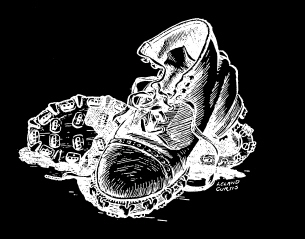
Some Climbs on the North Palisade
by Francis P. Farquhar
Sierra Club Bulletin 1932
The Sierra Club has long neglected the splendid territory lying at the foot of the Palisades on the eastern side. Here, at the head of Big Pine Creek, are fine forests, beautiful lakes, and scenery of a grandeur unsurpassed in any part of the Sierra.
August 9: to the North Palisade
In August, 1931, a party of nine camped for several days at one of the little lakes near the head of the North Fork of Big Pine Creek. Food and dunnage bags were packed in from Glacier Lodge, a half-day's trip. Three first-class climbs were made.
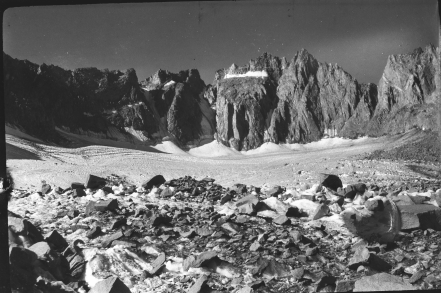
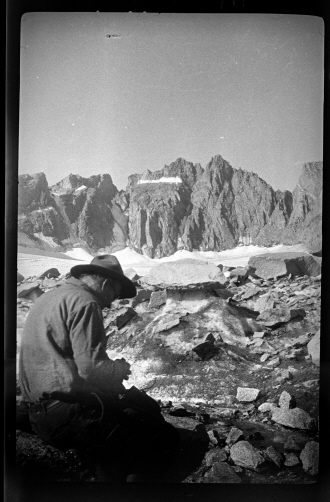
Norman Clyde has been very active in this field and has pioneered the routes on both the North and the Middle Palisades.
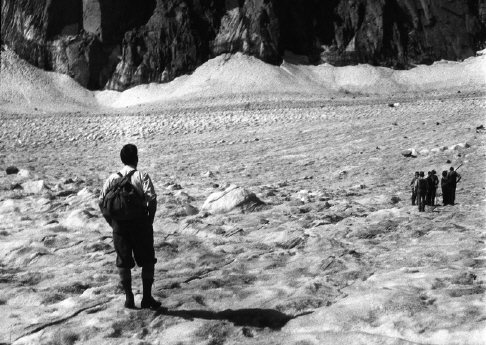
Farquhar in foreground
Moreover, there are the glaciers of the North Palisade and the Middle Palisade, by far the finest glaciers in the range, yet almost unknown to fame.
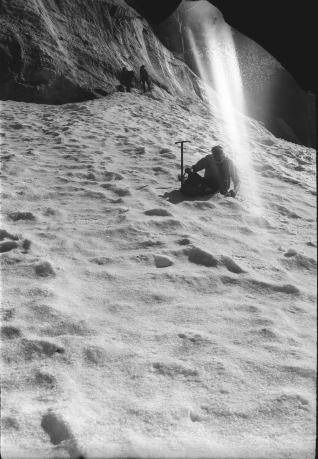
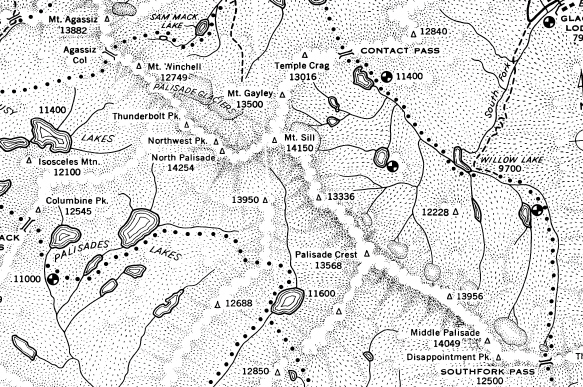
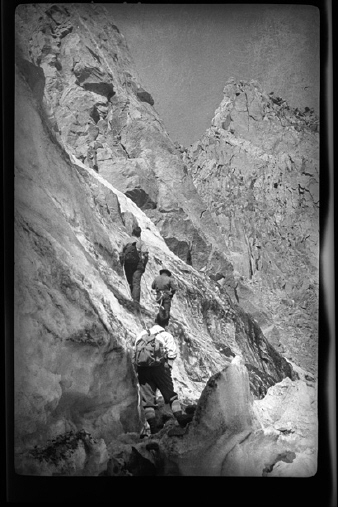
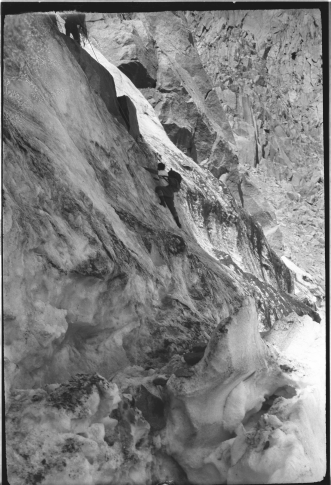
Above the glaciers stand the steep walls of the Palisades, presenting some of the finest opportunities for the sport of mountain-climbing that the Sierra Nevada affords.
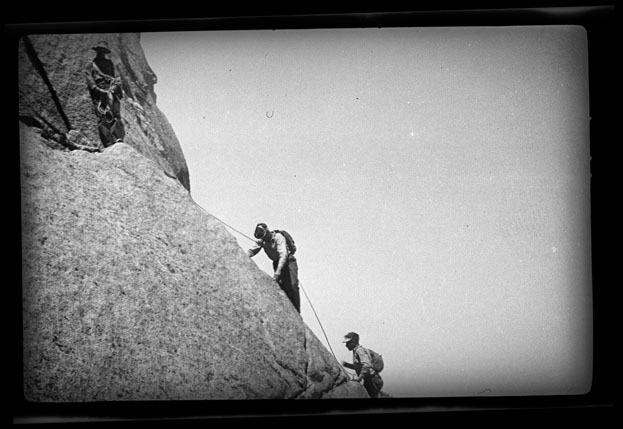
L-R Underhill, Robinson, Clark
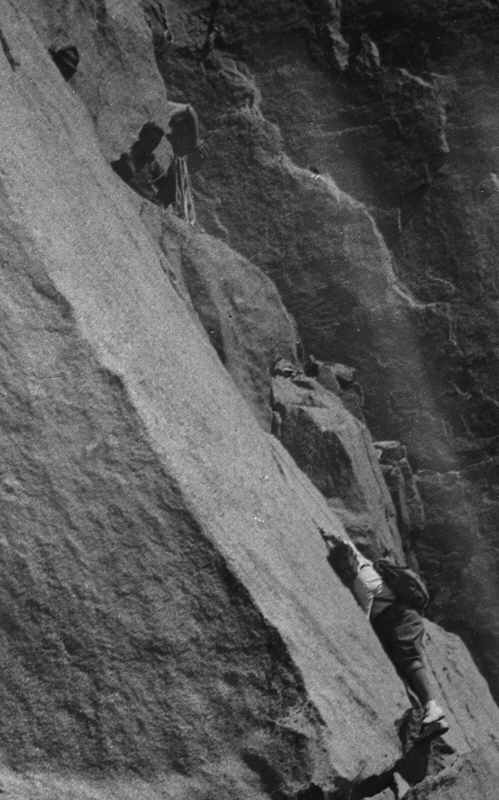
Clyde, Dawson, & Farquhar

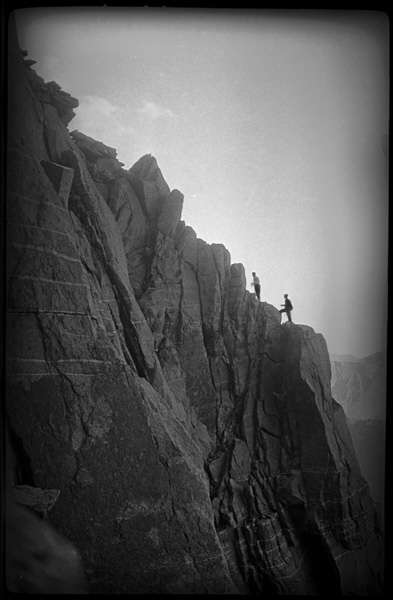
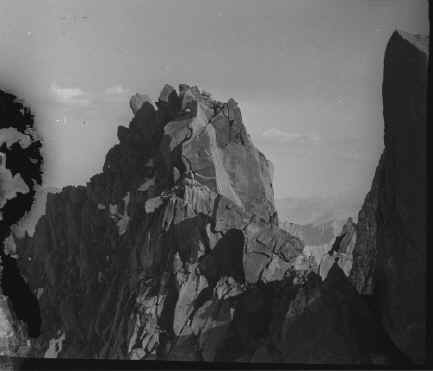
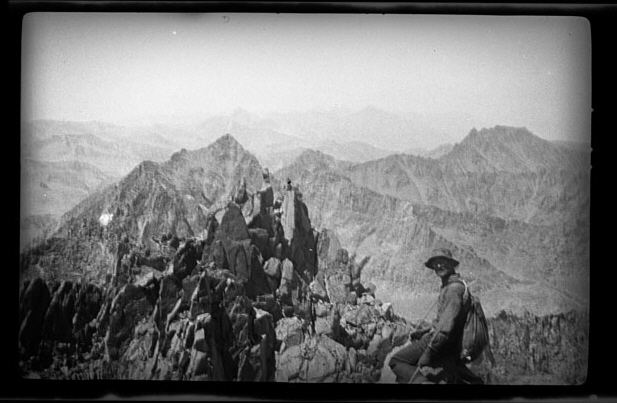
Underhill
Divided into three ropes, the party climbed from the glacier to the summit of North Palisade and traversed to the second highest peak, which stands close to the summit toward the northwest.
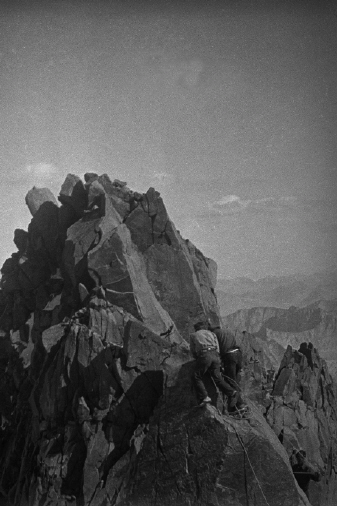
Dawson, Clyde, & Eichorn
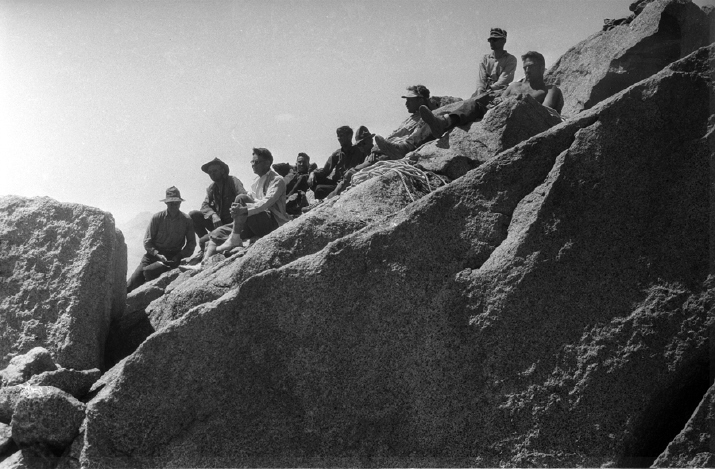
The first climb, on August 9th, was participated in by the entire party: (L-R) Robert L. M. Underhill and Norman Clyde - leaders; Francis P. Farquhar, Glen Dawson, Jules Eichorn, Neill C. Wilson, Lewis F. Clark, Bestor Robinson, and Elmer Collett.
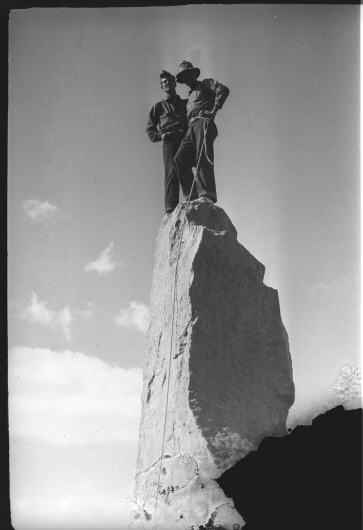
Eichorn & Underhill
The highest point of this second peak is a solitary pillar of granite*, which was surmounted by all save three of the party.
*(The Milkbottle on Starlight Peak , 14200')
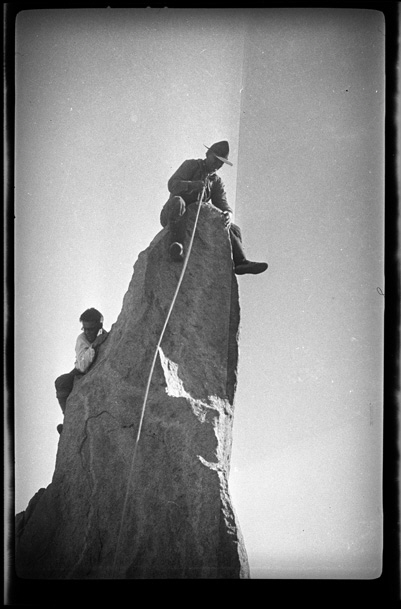
Farquhar & Clyde
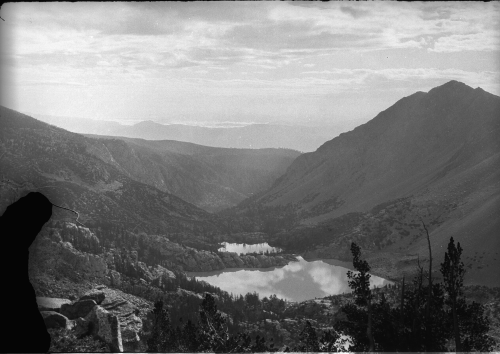
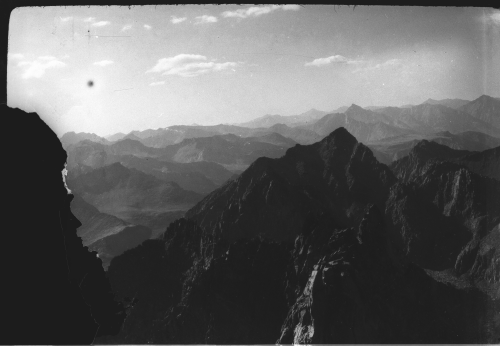
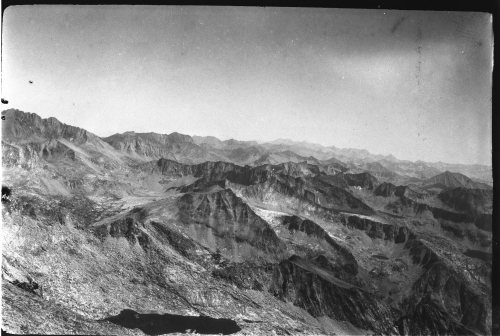
August 10: Rest Day in Camp
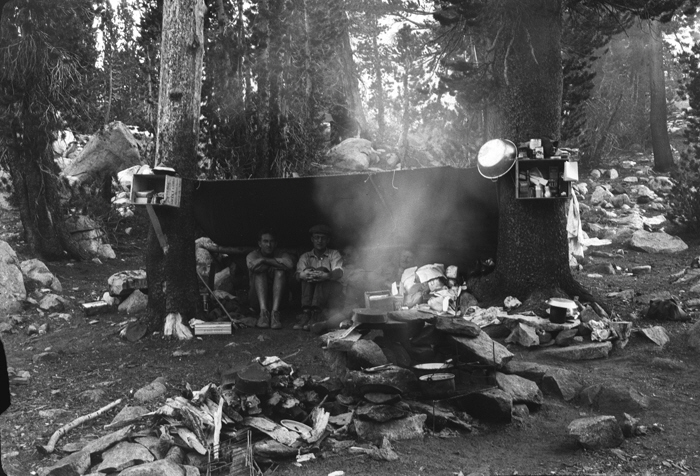
More Rain
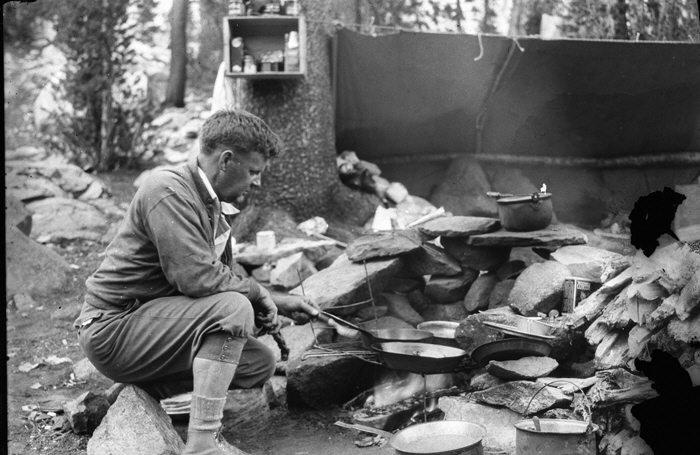
Francis on kitchen patrol
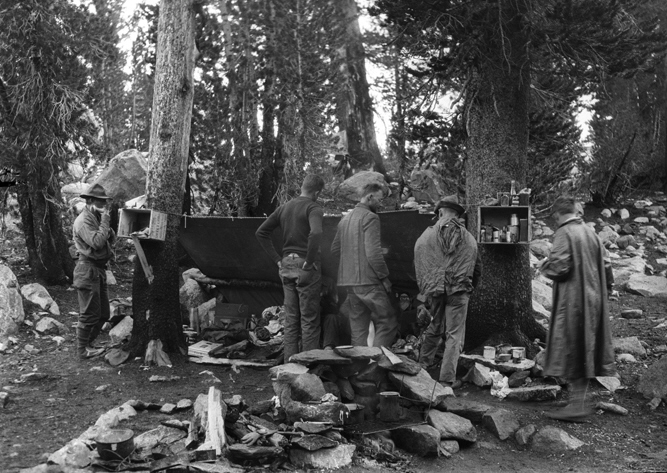
August 11: Temple Crag
On August 11th, in spite of heavy rain, an ascent of Temple Crag was made by Underhill, Clyde, Dawson, and Eichorn.
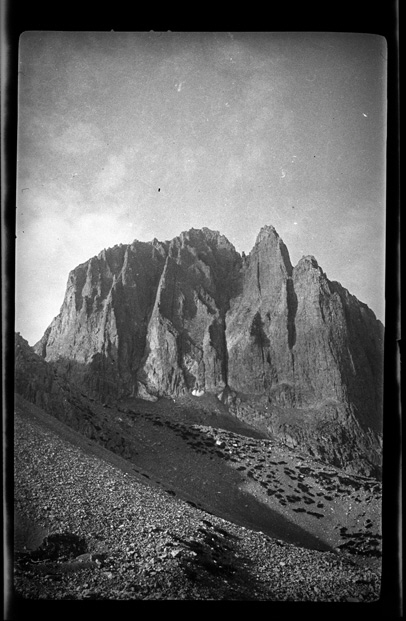
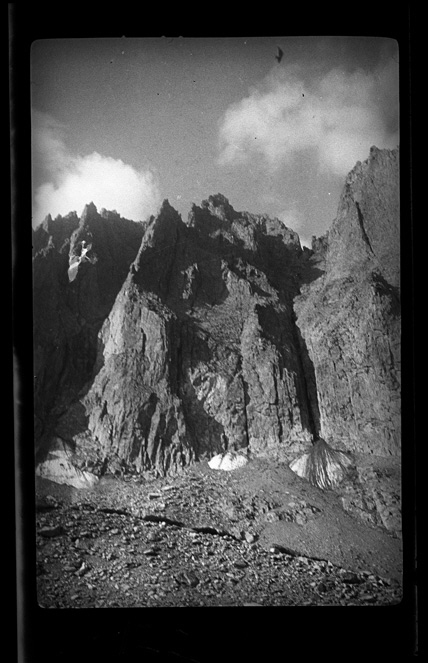
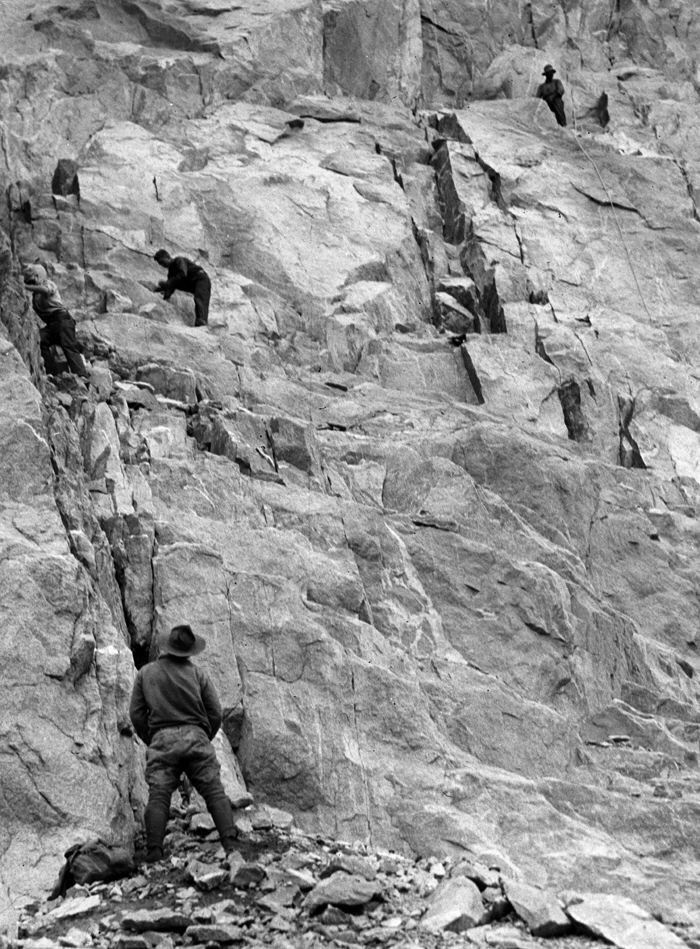
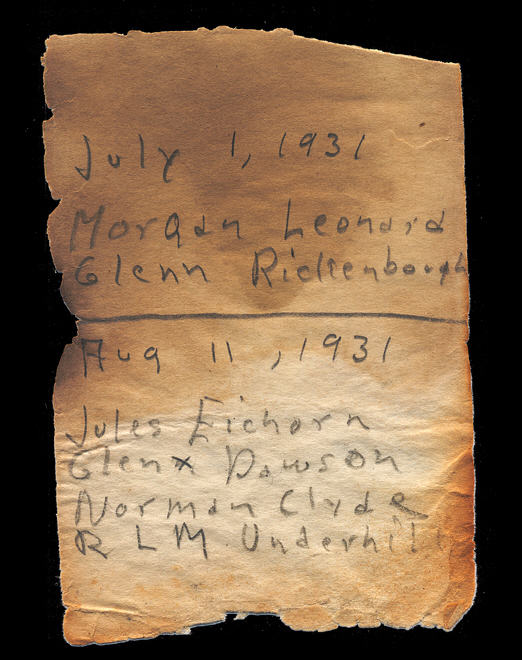
(Check out the story of how this was found!)
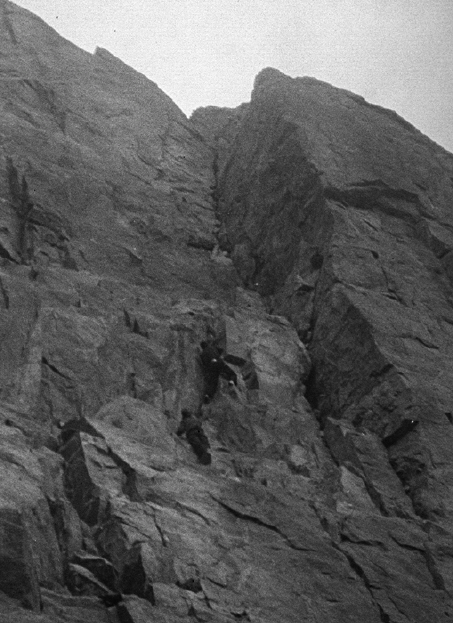
August 12 : Rest Day and Dry Out
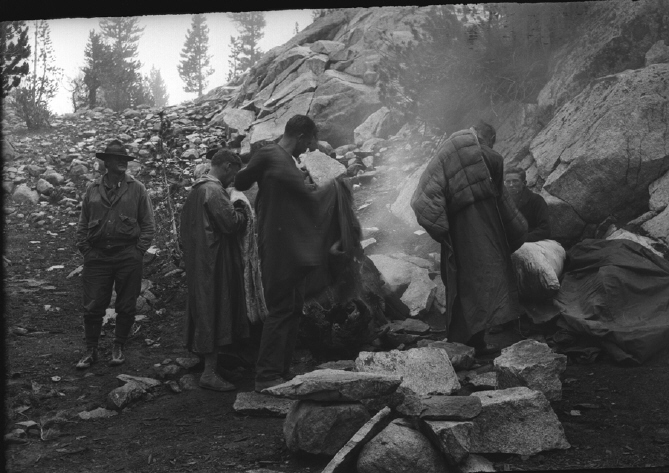
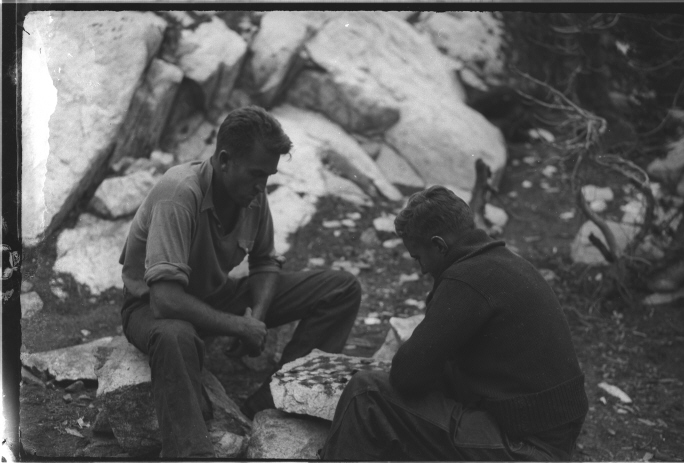
"Slim & Glen"
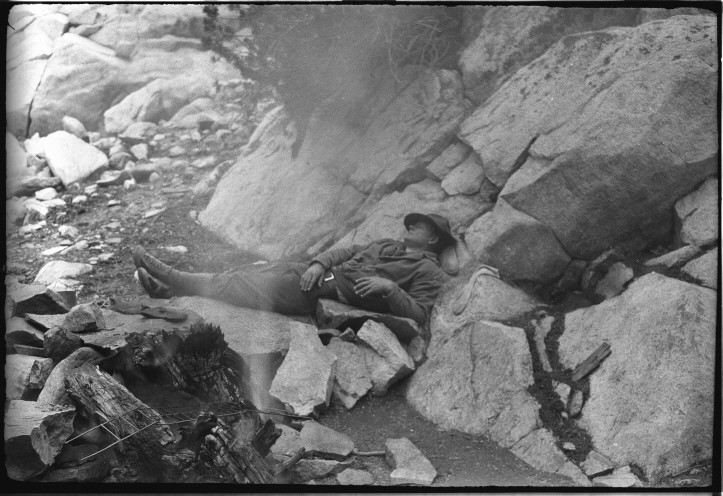
Out Cold
August 13: Thunderbolt Peak
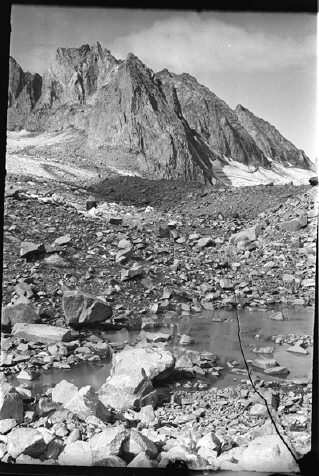
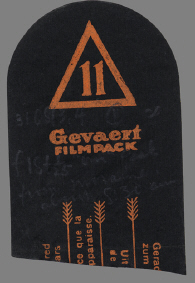
The morning of the I3th began with clear weather, and all save Wilson and Collett started for a climb of the northwest peak of North Palisade, which we subsequently named Thunderbolt Peak.
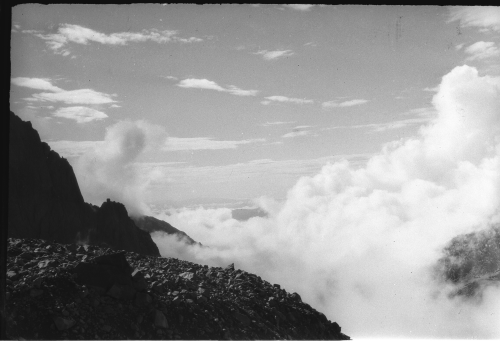
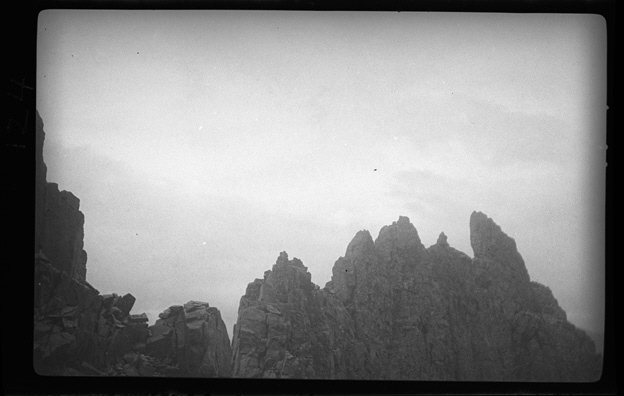
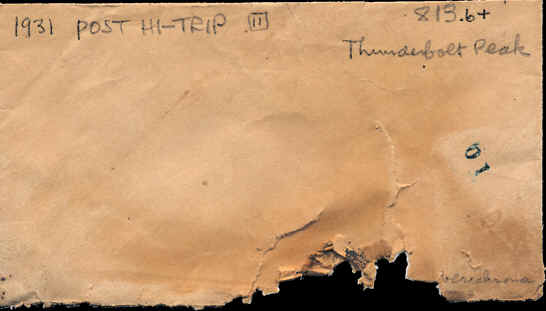
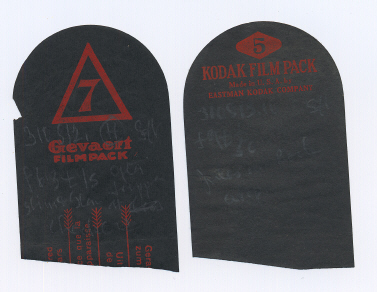
At this point Lewis switched from Agfa film to Kodak. Whatever the nature of the film substrate, the Kodak did not take to being soaked in water and then carefully peeled apart as the Agfa did. The emulsion on the Kodak just sort of fell off when wetted. The rest of the film for this trip is Kodak Verichrome so I'm sitting on this until I can come up with a better technique for salvaging it. Lewis used a 6x9cm plate camera (Voigtlander, I think) with a 520, 12 exposure film pack.
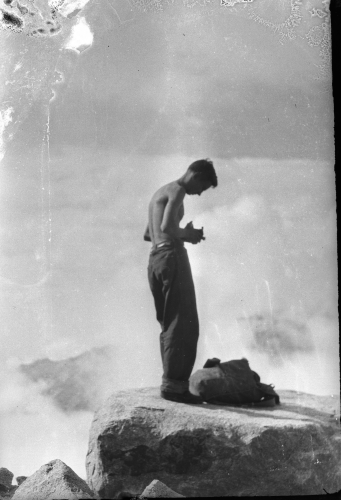
Glen

Jules
Clouds gathered rapidly, and shortly after the party reached the summit a violent thunder-storm drove all precipitately to a place of safety. So rapidly did the storm gather that Eichorn, last man to leave the ridge, was dangerously close to a lightning flash that appeared to strike the mountain.
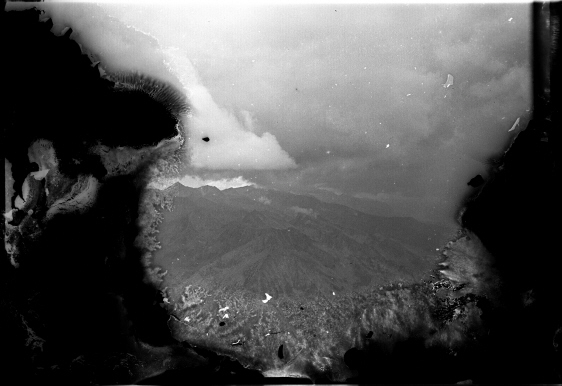
Here it comes!
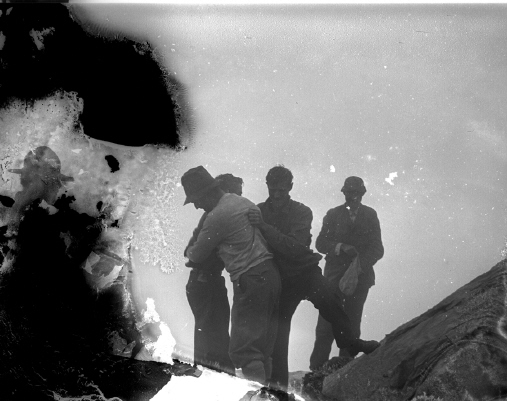
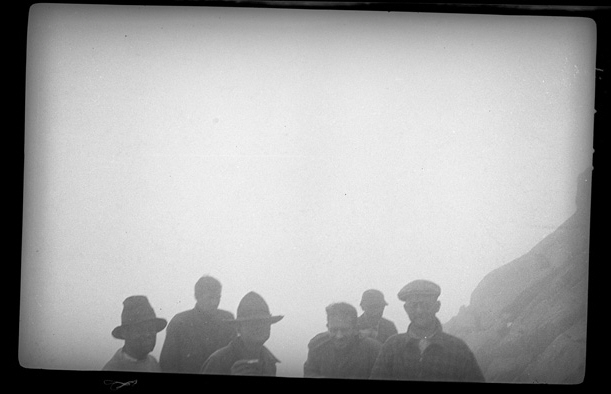
Socked-in on summit.

Underhill, last man down, says Glen.

After half an hour of huddling on a ledge, in the face of hail and snow, the storm permitted us to return. It was presumed that the descent would be an easy one, but the absence of snow, usually abundant above the bergschrund, made it necessary to rope down from the cliff, chop steps in the ice, and again rope down into the bergschrund.
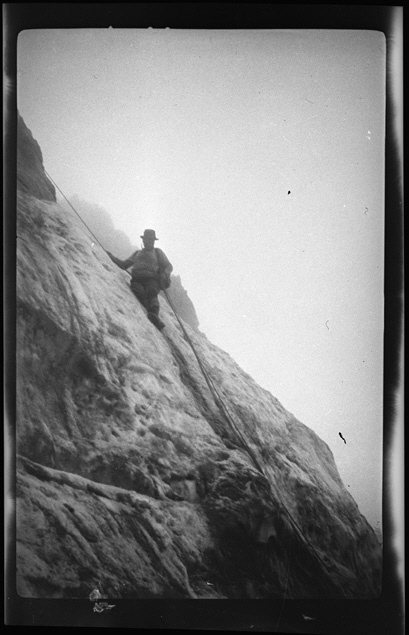
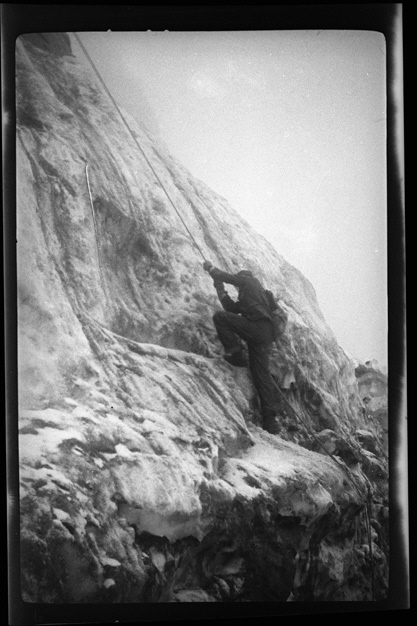
The result was an arrival at camp after dark.
These
three climbs demonstrated the facility with which even the most formidable
mountains of the Sierra can be overcome through the use of proper rope-technique
accompanied by sound leadership. It was also demonstrated that the ice-axe
is an important implement in making climbs in this region.
on to: